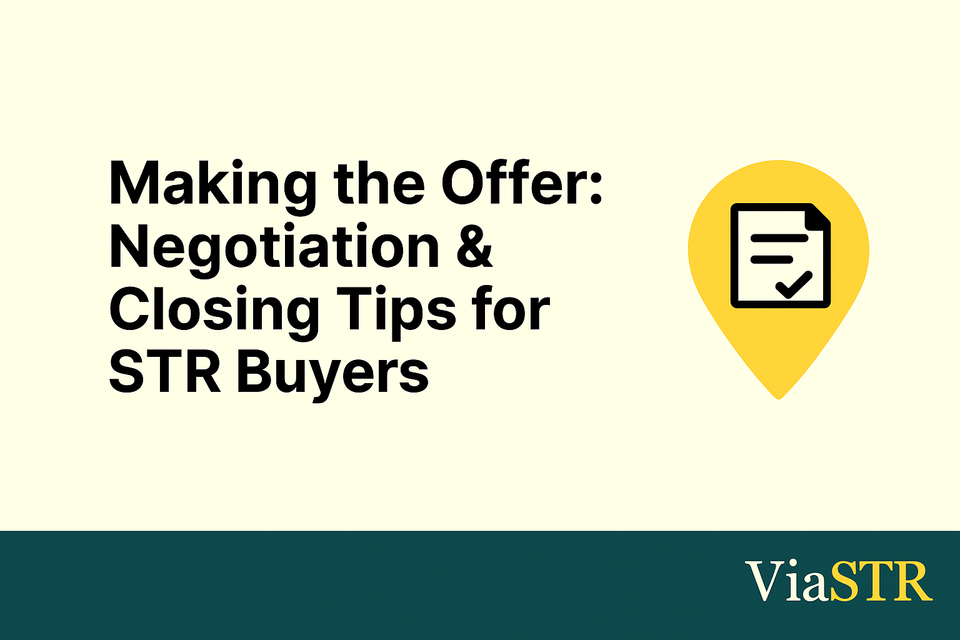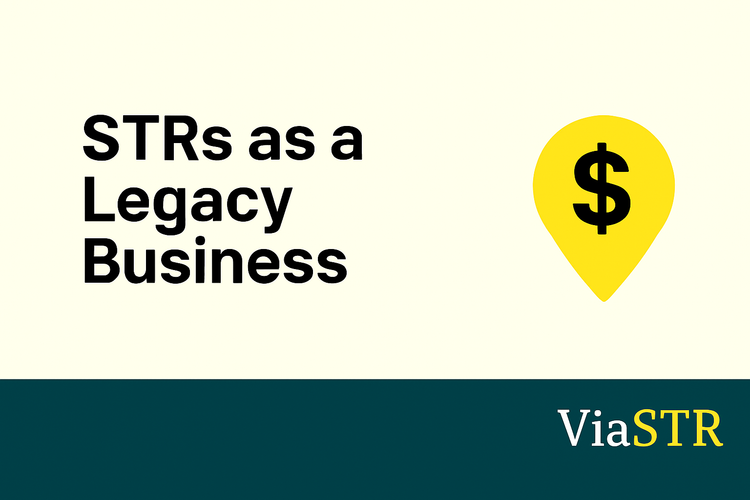Making the Offer: Negotiation & Closing Tips for STR Buyers

At a Glance
- Know your walk-away number before making an offer.
- Negotiate more than price—credits, furnishings, and closing costs matter.
- Use timing strategically to gain leverage in hot or slow markets.
- Protect yourself with contingencies like inspections and financing.
- Think like an investor, not a homeowner—every detail should maximize ROI.
Why Negotiation Matters in STR Investing
When you’ve found the right short-term rental (STR) deal, the next step is crafting a smart offer and negotiating terms that set you up for long-term success.
For W2 earners stepping into real estate, this is often the first place strategy separates winning deals from costly mistakes. Let’s walk through the playbook.
1. Know Your Walk-Away Number
Your cash-on-cash return (CoC), projected occupancy, and ADR should all be clear before you write an offer.
- Example: If your CoC target is 15% and the property under current assumptions only produces 8%, it’s not the right deal.
- Avoid emotional bidding—stick to the math.
👉 Need a refresher? Review our guide on How to Analyze STR Deals Like a Pro.
2. Negotiate More Than Price
Purchase price matters, but it’s not the only lever:
- Furnishings: Request furniture and appliances to remain. Saving $20K in furnishings directly improves your CoC.
- Credits: Negotiate seller credits for paint, flooring, or repairs instead of paying cash out-of-pocket.
- Closing Costs: Many sellers will contribute to buyer costs, especially if the property has lingered on the market.
📌 Pro Tip: Seller credits are often less emotionally charged than cutting price, and they put money directly back into your operating budget.
3. Time Your Offer Strategically
Timing shapes leverage:
- Fresh listings: In competitive markets, lead with a strong but data-driven offer.
- Stale listings: If a property has sat for 30+ days, you may have room for aggressive negotiation.
Case Study: An STR investor in Tennessee waited 60 days on a cabin listing, then negotiated $25,000 in seller concessions + furnishings that brought their launch costs down by nearly half.
4. Protect Yourself With Contingencies
Even in hot markets, smart investors rarely waive core protections.
- Inspection contingency: Ensures you don’t inherit hidden maintenance nightmares.
- Financing contingency: Protects you if your lender terms shift.
“Waiving contingencies may win deals—but it can also destroy your margins if repairs or financing fall through.”
5. Think Like an Investor, Not a Homeowner
This isn’t your dream home—it’s a business. Frame every negotiation around:
- How does this impact returns?
- Does this reduce risk?
- Will this decision make scaling easier later?
Investor mindset turns negotiation from an emotional process into a profit-driven strategy.
Key Takeaway
Making the right offer isn’t just about winning the deal—it’s about structuring it to fuel your long-term STR portfolio strategy.
With clear walk-away numbers, creative negotiation, and investor discipline, you’ll secure properties that perform today and build wealth tomorrow.
Next Steps
- Previous Post: How to Analyze STR Deals Like a Pro
- Next Post: Scaling Beyond Your First STR: Portfolio Growth Strategies
See Also
- Financing Your First STR: Loan Options for W2 Earners
- How to Choose the Right Market for Your STR
- The 6-Phase Journey: How W2 Earners Build Wealth with STRs



